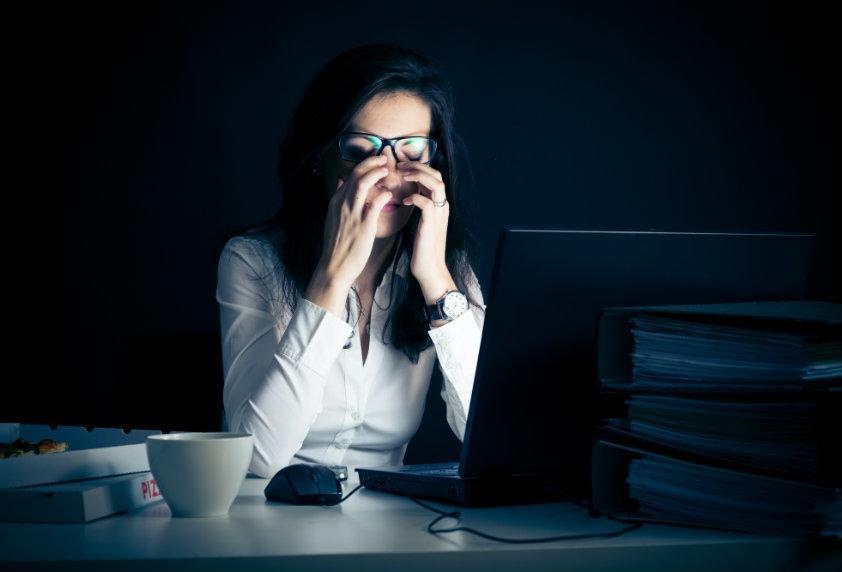Many people don’t realize that some day-to-day activities that you partake in can do damage to your eyes. Here are some common daily practices that can prevent you from unitentialy harming your eyes.
1) Sleeping in contacts
Sleeping in your contacts is never a good idea because it deprives the eyes of oxygen. There are only two types of contacts that are FDA-approved to wear while sleeping, but even those come with increased risks such as development of a corneal ulcer. If you do happen to accidentally fall asleep with your contacts in, don’t take them out right away. Wait about 30 minutes and put some eye wetting drops in first because if your eyes are dry, you could actually pull the top layer of your cornea away.
2) Touching and rubbing your eyes
Touching and rubbing your eyes can lead to bacteria and particles getting into your eye as well as broken blood vessels and inflammation from rubbing too hard or too often. The mucous membranes in the eye easily collects dirt and germs, so inviting these particles into your eyes is asking for bacteria to grow. If you must itch or rub your eye, keep the eyelid closed to prevent bacteria from getting into your eye.
3) Staring at devices all day
We are staring at a screen almost all day long – from our computers at work, our smartphones, and the television at home. Some eye doctors believe that electronic screens are as harmful as the sun’s ultraviolet rays, as they emit blue light. Another reason to take a break from the screen is that focusing on a fixed item for hours at a time causes eye strain which can lead to headaches and other conditions. It is always smart to take a 30-second break for every 30 minutes you look at a screen. Simply re-focus your eyes on something else and blink a few times to give your eyes a break and prevent strain.
4) Not getting annual eye exams
A common misconception about eye exams is that their only purpose to check your vision. This is not the case, as eye exams are necessary to check your overall eye health. There are no pain receptors behind the eye, so your body would not tell you if you have a condition such as a broken blood vessel or tumor unless it started to interfere with your vision.
5) Using old contacts, solution, or drops
You might that that there’s no harm in saving an old bottle of contact lens solution…but you may be doing more damage than you think. Saline solutions kill bacteria on the contact lenses, and the ingredients don’t do their job correctly if they are past their prime. The same thing can be said for the lenses themselves, which sit in a sterile solution that can expire. Eye drops also have an expiration date that you should pay close attention to for the same reasons.
6) Eye makeup
Applying your eyeliner to your waterline is a widely used, but risky makeup application technique. When you do this, you mix the eyeliner with your tears, and your eyes and/or contact lenses can get coated with small makeup particles. This can deprive your eyes of oxygen, cause damage to the cornea, and spread bacteria that can cause an infection. Liquid makeup liners are especially dangerous because they sit in a tube that can harbor bacteria, therefore a pencil is a safer choice as they are constantly being worn down and a new tip is exposed. False lashes are also on the list of makeup to avoid. If you rub them and/or fall asleep in them, the eyelash glue can get into your cornea and lead to inflammation.
7) Ditching the sunglasses
Sunglasses aren’t only for the Summertime! Failing to wear UV protection for your eyes can lead to visible spots on the whites of the eyes, corneal burns, or even skin cancer on the eyelids. Make sure that you’re always wearing sunglasses in the sunlight and that they provide protection against UVA and UVB rays.
8) Sleeping in your makeup
We are all guilty of not washing our makeup off before going to sleep, but this can do more damage than simply leaving mascara stains on your pillow. Sleeping in our makeup can clog the glands around your eyes and can even lead to styes – those painful, raised bumps that can appear on or around the eyelids.
These things may seem simple and harmless, but they can definitely lead to dangerous conditions that can affect your eye health. Take the time to keep your eyes healthy and remember to do schedule a yearly eye screen exam.
